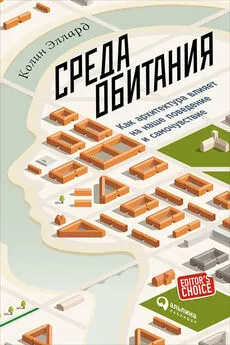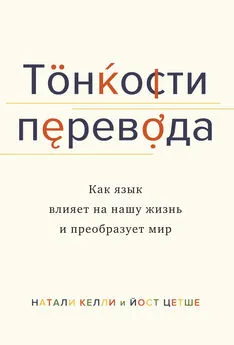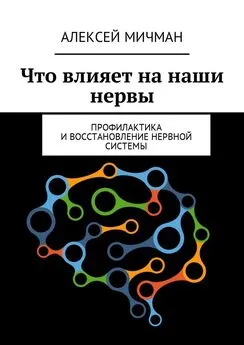Мэтью Джексон - Человеческие сети [Как социальное положение влияет на наши возможности, взгляды и поведение]
- Название:Человеческие сети [Как социальное положение влияет на наши возможности, взгляды и поведение]
- Автор:
- Жанр:
- Издательство:АСТ: CORPUS
- Год:2021
- Город:Москва
- ISBN:978-5-17-117364-7
- Рейтинг:
- Избранное:Добавить в избранное
-
Отзывы:
-
Ваша оценка:
Мэтью Джексон - Человеческие сети [Как социальное положение влияет на наши возможности, взгляды и поведение] краткое содержание
В формате PDF A4 сохранен издательский макет книги.
Человеческие сети [Как социальное положение влияет на наши возможности, взгляды и поведение] - читать онлайн бесплатно ознакомительный отрывок
Интервал:
Закладка:
Kohn G. C. ed. Encyclopedia of Plague and Pestilence: From Ancient Times to the Present . Infobase Publishing, 2008.
König M. D., Tessone C. J., Zenou Y. Nestedness in Networks: A Theoretical Model and Some Applications // Theoretical Economics. 2014. Vol. 9. P. 695–752.
Krackhardt D. Cognitive Social Structures // Social Networks. 1987. Vol. 9. P. 109–134.
Krackhardt D. Structural Leverage in Marketing // Networks in Marketing / Ed. D. Iacobucci. Thousand Oaks, CA: Sage, 1996. P. 50–59.
Krapivsky P. L., Redner S., Leyvraz F. Connectivity of Growing Random Networks // Physical Review Letters . 2000. Vol. 85. P. 4629.
Kremer M., Chaudhury N., Rogers F. H., Muralidharan K., Hammer J. Teacher Absence in India: A Snapshot // Journal of the European Economic Association. 2005. Vol. 3. P. 658–667.
Krugman P. Why We’re in a New Gilded Age // The New York Review of Books. 2014. May 8.
Kuhn P., Kooreman P., Soetevent A., Kapteyn A. The Effects of Lottery Prizes on Winners and Their Neighbors: Evidence from the Dutch Postcode Lottery // American Economic Review. 2011. Vol. 101. № 5. P. 2226–2247.
Kumar R., Raghavan P., Rajagopalan S., Sivakumar D., Tomkins A., Upfal E. Stochastic Models for the Web Graph // Foundations of Computer Science, 2000, Proceedings, 41st Annual Symposium, IEEE, p. 57–65.
Laguna-Müggenburg E. Using Homophily to Spread Information: Influencers Need Not Be Superstars . Mimeo, Stanford University, 2017.
Lalanne M., Seabright P. The Old Boy Network: The Impact of Professional Networks on Remuneration in Top Executive Jobs . (2016) SAFE.Working Paper № 123.
Lareau A. Unequal Childhoods: Class, Race, and Family Life . Berkeley: University of California Press, 2011.
Laschever R. A. The Doughboys Network: Social Interactions and Labor Market Outcomes of World War I Veterans . (2011) SSRN Discussion Paper № 1205543.
Lau M. S. Y., Dalziel B. D., Funk S., McClelland A., Tiffany A., Riley S., Metcalf C. J. E., Grenfell B. T. Spatial and Temporal Dynamics of Superspreading Events in the 2014–2015 West Africa Ebola Epidemic // Proceedings of the National Academy of Sciences. 2017. Vol. 114. № 9. P. 2337–2342.
Lazarsfeld P. F., Berelson B., Gaudet H. The People’s Choice: How the Voter Makes Up His Mind in a Presidential Campaign . N. Y.: Columbia University Press, 1948.
Lazarsfeld P. F., Merton R. K. Friendship as a Social Process: A Substantive and Methodological Analysis // Freedom and Control in Modern Society / Ed. M. Berger. N. Y.: Van Nostrand, 1954.
Lazear E. P. Culture and Language // Journal of Political Economy. 1999. Vol. 107. P. S95–S126.
Lazer D., Wojcik S. Political Networks and Computational Social Science // The Oxford Handbook of Political Networks / Ed. J. Victor, A. Montgomery, M. Lubell. N. Y.: Oxford University Press, 2017.
Leduc M. V., Jackson M. O., Johari R. Pricing and Referrals in Diffusion on Networks . (2016) SSRN Paper № 2425490.
Lee C. L., Solon G. Trends in Intergenerational Income Mobility // Review of Economics and Statistics. 2009. Vol. 91. № 4. P. 766–772.
Lelkes Y., Sood G., Iyengar S. The Hostile Audience: The Effect of Access to Broadband Internet on Partisan Affect // American Journal of Political Science. 2015. Vol. 61. № 1. P. 5–20.
Lerman K., Yan X., Wu X.-Z. The Majority Illusion in Social Networks . 2015. ArXiv: 1506.03022v1.
Lerner J., Malmendier U. With a Little Help from My (Random) Friends: Success and Failure in Post — Business School Entrepreneurship // Review of Financial Studies. 2013. Vol. 26. P. 2411–2452.
Levitt S. D., Dubner S. J. Freakonomics . N. Y.: HarperCollins, 2005.
Levy G., Razin R. Correlation Neglect, Voting Behavior, and Information Aggregation // The American Economic Review. 2015. Vol. 105. P. 1634–1645.
Li. W., Bradshaw A. E., Clary C. B., Cranmer S. J. A Three-Degree Horizon of Peace in the Military Alliance Network // Science Advances. 2017. Vol. 3. Article № e1601895.
Lin K.-H., Lundquist J. Mate Selection in Cyberspace: The Intersection of Race, Gender, and Education // The American Journal of Sociology. 2013. Vol. 119. № 1. P. 183–215.
Lin N. Building a Network Theory of Social Capital // Connections. 1999. Vol. 22. P. 28–51.
Lindert P. H., Williamson J. G. American Incomes 1774–1860 . (2012) National Bureau of Economic Research Working Paper № 18396.
Lindquist M. J., Zenou Y. Key Players in Co-offending Networks . 2014. Доступно: http://ssrn.com/abstract=2444910.
List J. A. The Behavioralist Meets the Market: Measuring Social Preferences and Reputation Effects in Actual Transactions // Journal of Political Economy. 2006. Vol. 114. P. 1–37.
List J. A., Rasul I. Field Experiments in Labor Economics // Handbook of Labor Economics. 2011. Vol. 4. P. 103–228.
Lobel I., Sadler E. Information Diffusion in Networks Through Social Learning // Theoretical Economics. 2015. Vol. 10. P. 807–851.
Lorrain F., White H. C. Structural Equivalence of Individuals in Social Networks // The Journal of Mathematical Sociology. 1971. Vol. 1. P. 49–80.
Loury G. A Dynamic Theory of Racial Income Differences // Women, Minorities, and Employment Discrimination. 1977. Vol. 153. P. 86–153.
Loury G. The Anatomy of Racial Inequality . Cambridge, Mass.: Harvard University Press, 2009.
Lucas R. E. (Jr.) Glass-Steagall: A Requiem // The American Economic Review: Papers and Proceedings. 2013. Vol. 103. № 3. P. 43–47.
Ludwig J., Liebman J. B., Kling J. R., Duncan G. J., Katz L. F., Kessler R. C., Sanbonmatsu L. What Can We Learn About Neighborhood Effects from the Moving to Opportunity Experiment // American Journal of Sociology. 2008. Vol. 114. P. 144–188.
Mailath G. J., Samuelson L. Repeated Games and Reputations: Long-Run Relationships . Oxford, U. K.: Oxford University Press, 2006.
Manski Ch. F. Identification of Endogenous Social Effects: The Reflection Problem // The Review of Economic Studies. 1993. Vol. 60. № 3. P. 531–542.
Manski Ch. F. Interpreting the Predictions of Prediction Markets // Economics Letters. 2006. Vol. 91. P. 425–429.
Marmaros D., Sacerdote B. Peer and Social Networks in Job Search // European Economic Review. 2002. Vol. 46. P. 870–879.
Marshall A. Principles of Political Economy . N. Y.: Macmillan, 1890.
Martinelli C. A., Parker S., Pérez-Gea A. C., Rodrigo R. Cheating and Incentives: Learning from a Policy Experiment . 2015. Доступно: https://ssrn.com/abstract=2606487.
Martinelli C. A., Parker S., Pérez-Gea A. C., Rodrigo R. Cheating and Incentives: Learning from a Policy Experiment . Working Paper, George Mason University, 2016.
Marvel S. A., Martin T., Doering Ch. R., Lusseau D., Newman M. E. J. The Small-World Effect Is a Modern Phenomenon . 2013. ArXiv: 1310.2636.
Massey D. S., Arango J., Hugo G., Kouaouci A., Pellegrino A., Taylor J. E. Worlds in Motion: Understanding International Migration at the End of the Millennium . Oxford, U. K.: Oxford University Press, 1998.
Massey D. S., Denton N. A. American Apartheid: Segregation and the Making of the Underclass . Cambridge, Mass.: Harvard University Press, 1993.
Mauleon A., Vannetelbosch V. Farsightedness and Cautiousness in Coalition Formation Games with Positive Spillovers // Theory and Decision. 2004. Vol. 56. P. 291–324.
Mazzocco M., Saini S. Testing Efficient Risk Sharing with Heterogeneous Risk Preferences // The American Economic Review. 2012. Vol. 102. P. 428–468.
McCarty Ch., Killworth P. D., Bernard H. R., Johnsen E. C. Comparing Two Methods for Estimating Network Size // Human Organization. 2001. Vol. 60. № 1. P. 28–39.
McCormick T. H., Salganik M. J., Zheng T. How Many People Do You Know?: Efficiently Estimating Personal Network Size // Journal of the American Statistical Association. 2010. Vol. 105. № 489. P. 59–70.
McCoy E. The Emperor of Wine: The Rise of Robert M. Parker, Jr., and the Reign of American Taste . N. Y.: HarperCollins, 2014.
McFarland D. A., Moody J., Diehl D., Smith J. A., Thomas R. J. Network Ecology and Adolescent Social Structure // American Sociological Review. 2014. Vol. 79. № 6. P. 1088–1121.
McPherson M., Smith-Lovin L., Cook J. M. Birds of a Feather: Homophily in Social Networks // Annual Review of Sociology. 2001. Vol. 27. № 1. P. 415–444.
McShane B. B., Bradlow E. T., Berger J. Visual Influence and Social Groups // Journal of Marketing Research. 2012. Vol. 49. № 6. P. 854–871.
Mele A. A Structural Model of Segregation in Social Networks // Econometrica. 2017. Vol. 85. № 3. P. 825–850.
Mengel F. Gender Differences in Networking . 2015. Доступно: https://ssrn.com/abstract=2636885.
Miller J. H., Page S. E. Complex Adaptive Systems: An Introduction to Computational Models of Social Life . Princeton, N. J.: Princeton University Press, 2009.
Mitzenmacher M. A Brief History of Generative Models for Power Law and Lognormal Distributions // Internet Mathematics. 2004. Vol. 1. P. 226–251.
Mobius M., Phan T., Szeidl A. TreasureHunt: Social Learning in the Field . (2015) National Bureau of Economic Research Paper № 21014.
Molavi P., Tahbaz-Salehi A., Jadbabaie A. A Theory of Non-Bayesian Social Learning // Econometrica. 2018. Vol. 86. № 2. P. 445–490.
Monsted B., Sapiezynski P., Ferrara E., Lehmann S. Evidence of Complex Contagion of Information in Social Media: An Experiment Using Twitter Bots . 2017. ArXiv preprint arXiv:1703.06027.
Montgomery J. D. Social Networks and Labor-Market Outcomes: Toward an Economic Analysis // The American Economic Review. 1991. Vol. 81. P. 1408–1418.
Moody J., Mucha P. J. Portrait of Political Party Polarization // Network Science. 2013. Vol. 1. № 1. P. 119–121.
Moore C., Newman M. E. J. Epidemics and Percolation in Small-World Networks // Physical Review E. 2000. Vol. 61. P. 5678.
Morelli Sylvia A., Ong D. C., Makati R., Jackson M. O., Zaki J. Psychological Trait Correlates of Individuals’ Positions in Social Networks // Proceedings of the National Academy of Sciences. 2017. Vol. 114. № 37. P. 9843–9847.
Moretti E. Social Learning and Peer Effects in Consumption: Evidence from Movie Sales // The Review of Economic Studies. 2011. Vol. 78. P. 356–393.
Morris S. Contagion // Review of Economic Studies. 2000. Vol. 67. № 1. P. 57–78.
Munshi K. Networks in the Modern Economy: Mexican Migrants in the US Labor Market // The Quarterly Journal of Economics. 2003. Vol. 118. P. 549–599.
Muralidharan K., Kremer M. Public and Private Schools in Rural India . Cambridge, Mass.: MIT Press, 2009. P. 1–27.
Myers Ch. A., Shultz G. P. The Dynamics of a Labor Market . Chicago: Greenwood, 1951.
Nannicini T., Stella A., Tabellini G., Troiano U. Social Capital and Political Accountability // The American Economic Journal: Economic Policy. 2013. Vol. 5. P. 222–250.
Neal L. D., Weidenmier M. D. Crises in the Global Economy fromTulipsto Today // Globalization in Historical Perspective. Chicago: University of Chicago Press, 2003. P. 473–514.
Читать дальшеИнтервал:
Закладка:
![Обложка книги Мэтью Джексон - Человеческие сети [Как социальное положение влияет на наши возможности, взгляды и поведение]](/books/1061636/metyu-dzhekson-chelovecheskie-seti-kak-socialnoe-po.webp)









